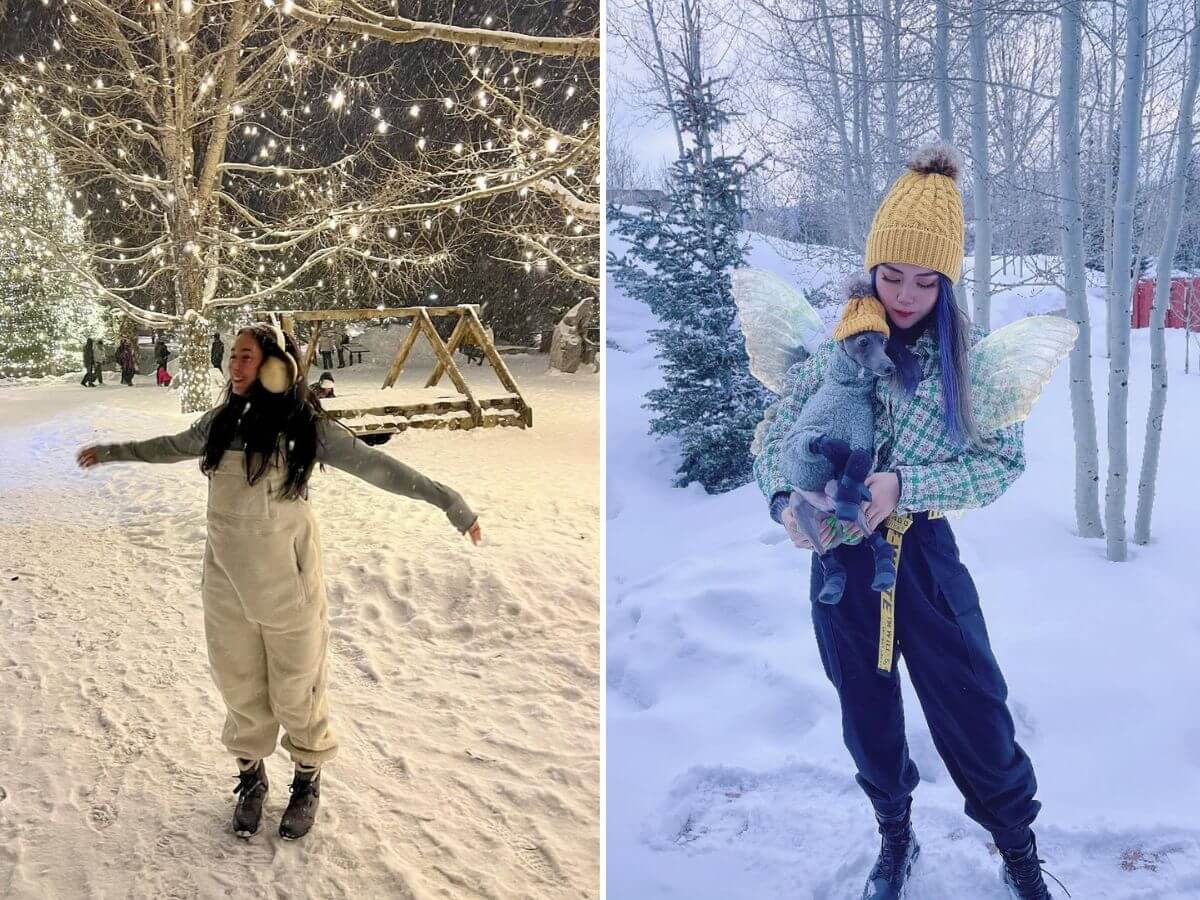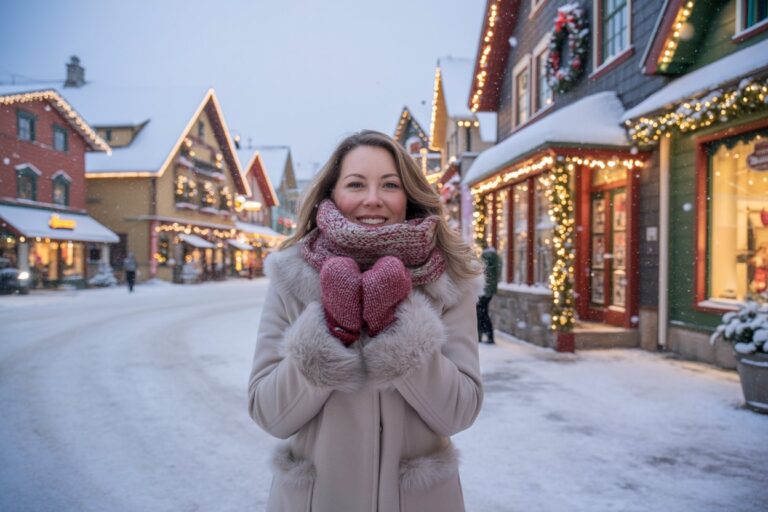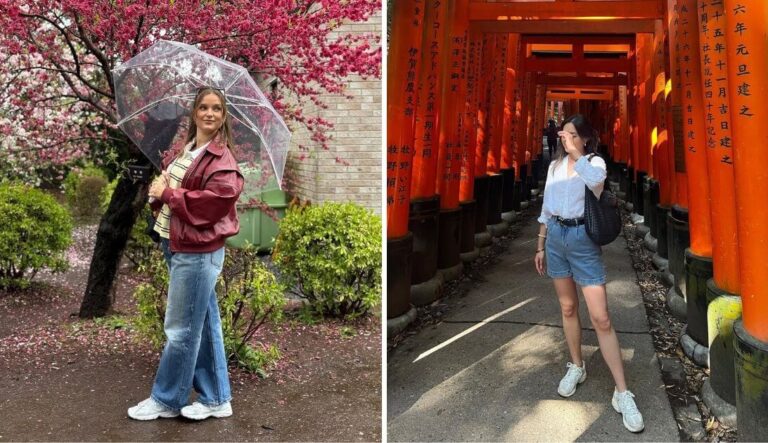Cozy Breckenridge, Colorado Outfit for Snow Days
I still remember stepping outside my cabin in Breckenridge for the first time. The air cut like glass, snow stacked higher than my boots, and my eyelashes froze before I could take a breath.
It’s the kind of cold that humbles you — and teaches you fast that survival here depends on what you wear.
If you’ve ever dreamed of a snow day that feels cinematic, Breckenridge is the place. The streets glow under string lights, the air smells like pine and coffee, and every photo looks like a postcard.
But comfort doesn’t happen by chance up here. It comes from choosing layers that fight the wind, boots that grip the ice, and pieces that keep you warm long after the sun dips behind the peaks.
So before you pack for Colorado, let’s build a Breckenridge outfit that earns its space in your suitcase — gear that keeps you cozy when the mountain shows its wild side.
What to Wear in Breckenridge When the Weather Decides for You
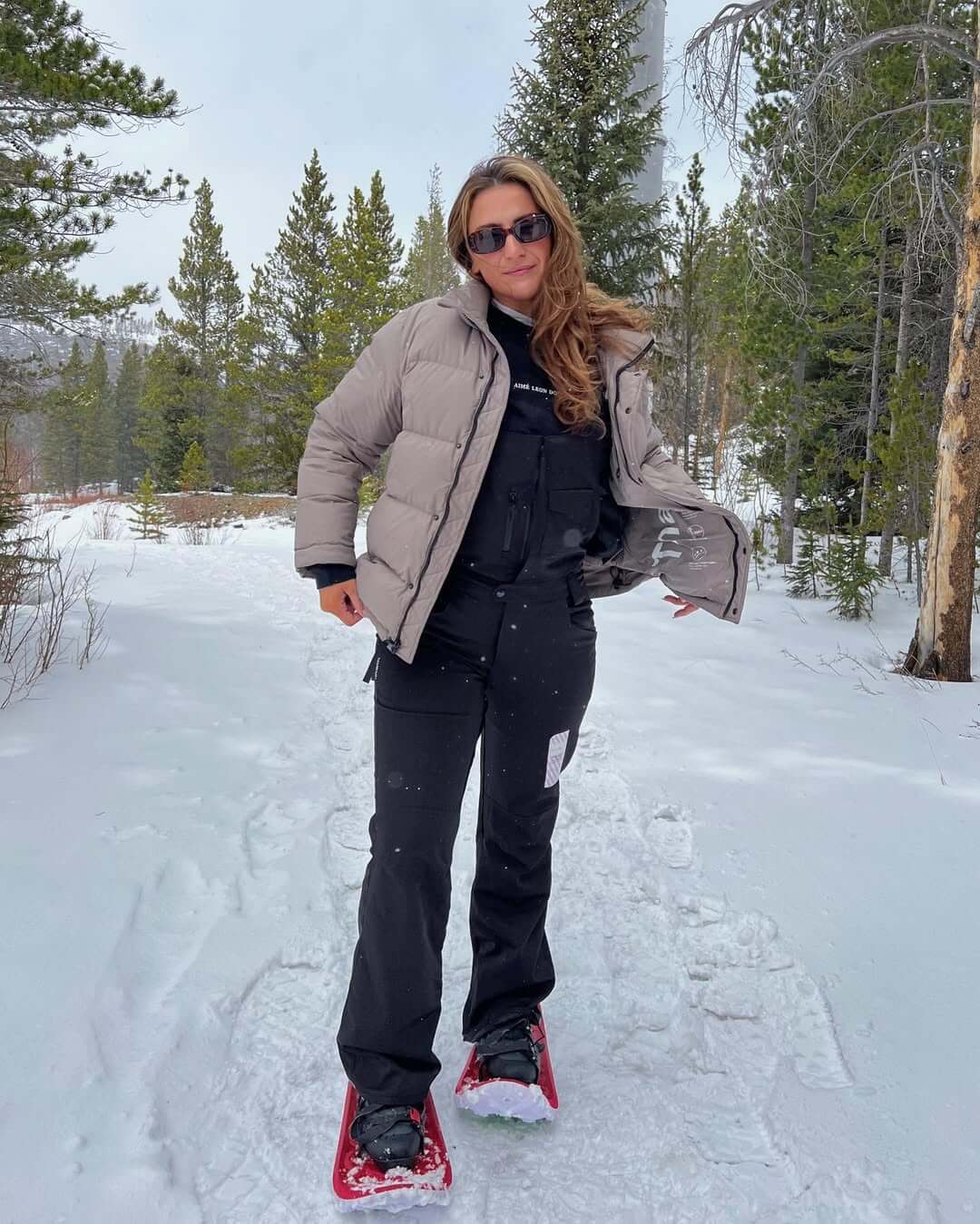
Breckenridge in winter doesn’t ease you in — it hits you head-on. Average daytime temps sit around 28°F and dip to 15°F at night, according to GoBreck.
Add a whisper of wind and it cuts through every gap in your clothing.
I learned the hard way that no “cute sweater” stands a chance against that kind of bite. The air at 9,600 feet feels thinner, drier, and far colder than you expect.
Your city jacket? It’ll last maybe ten minutes.
Here’s what most travelers miss — Breck’s sunshine doesn’t mean warmth.
Colorado.com explains that high elevation means strong UV rays even on cloudy days, so sunglasses and sunscreen are just as vital as gloves.
I started keeping a small SPF stick in my pocket, and it saved me from peeling cheeks by day three.
When you understand how this mountain plays with weather, you stop guessing and start dressing like a local.
Also read:
The Secret to Staying Warm: Layer Like a Pro

Every local I met swore by one thing — the three-layer rule. A base layer to pull moisture away, a mid‐layer to trap heat, and an outer shell to stop wind and snow.
It sounds simple, but getting it right takes practice.
REI explains that this system works because each layer handles a different job: the base wicks sweat, the mid retains heat, the shell blocks the elements.
I swapped my cotton tee for a thin merino top and felt the difference instantly.
Cotton traps sweat, which cools fast in the cold. Wool or synthetics breathe, keeping you comfortable even when hiking up those steep Breckenridge trails.
Before you pack, test your gear at home — wear it, move around, and see if it traps heat without getting clammy. That quick check saved me from carrying useless layers more than once.
Once you’ve got the layers down, your jacket becomes your shield.
Outerwear That Battles Snow and Wind

When I bought my first parka, I thought “water-resistant” sounded fine. It wasn’t. In Breckenridge, snow doesn’t drift gently — it dumps.
You need a waterproof rating of at least 10,000 mm to handle wet storms, according to Snow+Rock, which explains that this rating means the fabric can withstand a 10-meter column of water before any moisture seeps through.
The difference is in the details: snug cuffs, storm flaps, zippers that tuck away from wind, and hoods that tighten around your face.
One borrowed jacket with proper drawcords convinced me how much design matters over labels.
If your coat lets wind slip through your collar, trade it out before your next run to the coffee shop.
Once your upper half is sealed, warmth flows better through the rest of your gear — and that’s where boots and gloves take over.
And trust me, your feet will thank you halfway down Main Street when everyone else is shivering.
Boots, Pants, and Gloves That Don’t Quit

Jeans look good until you sit in snow. Choose insulated snow pants or shells you can layer under. They block moisture and stretch with every step.
For footwear, Travel + Leisure tested winter boots and found that models using 200-gram insulation or more perform best in sub-zero temps. That benchmark became my rule.
On Breckenridge’s icy Main Street, my insulated boots kept my toes warm while others stomped their feet between stops.
Gloves follow the same logic. A thin fleece liner adds flexibility; a waterproof shell locks in heat. I keep small hand warmers in each pocket — they’re cheap and work instantly on chairlifts or sunrise walks.
Once you’ve layered, zipped, and laced up, it’s time for the fun part — style meets survival.
Accessories That Save the Day (and the Photos)

Accessories are where personality shows. A snug beanie, a neck gaiter that doesn’t slip, and a scarf that actually stays wrapped — these small details turn a basic outfit into something photo-ready.
Bright snow can blind you faster than you think, so bring polarized sunglasses or goggles. Breck’s light bounces off rooftops and sidewalks alike.
And don’t skip skin care. The dry mountain air is relentless. By day two, my lips felt like sandpaper until I grabbed an SPF lip balm and a small tin of moisturizer.
Keep them in your pocket — they weigh less than a granola bar and make you feel human again halfway through the day.
Once your setup’s complete, the next challenge is fitting it all into your bag.
Packing Smart for Winter Travel
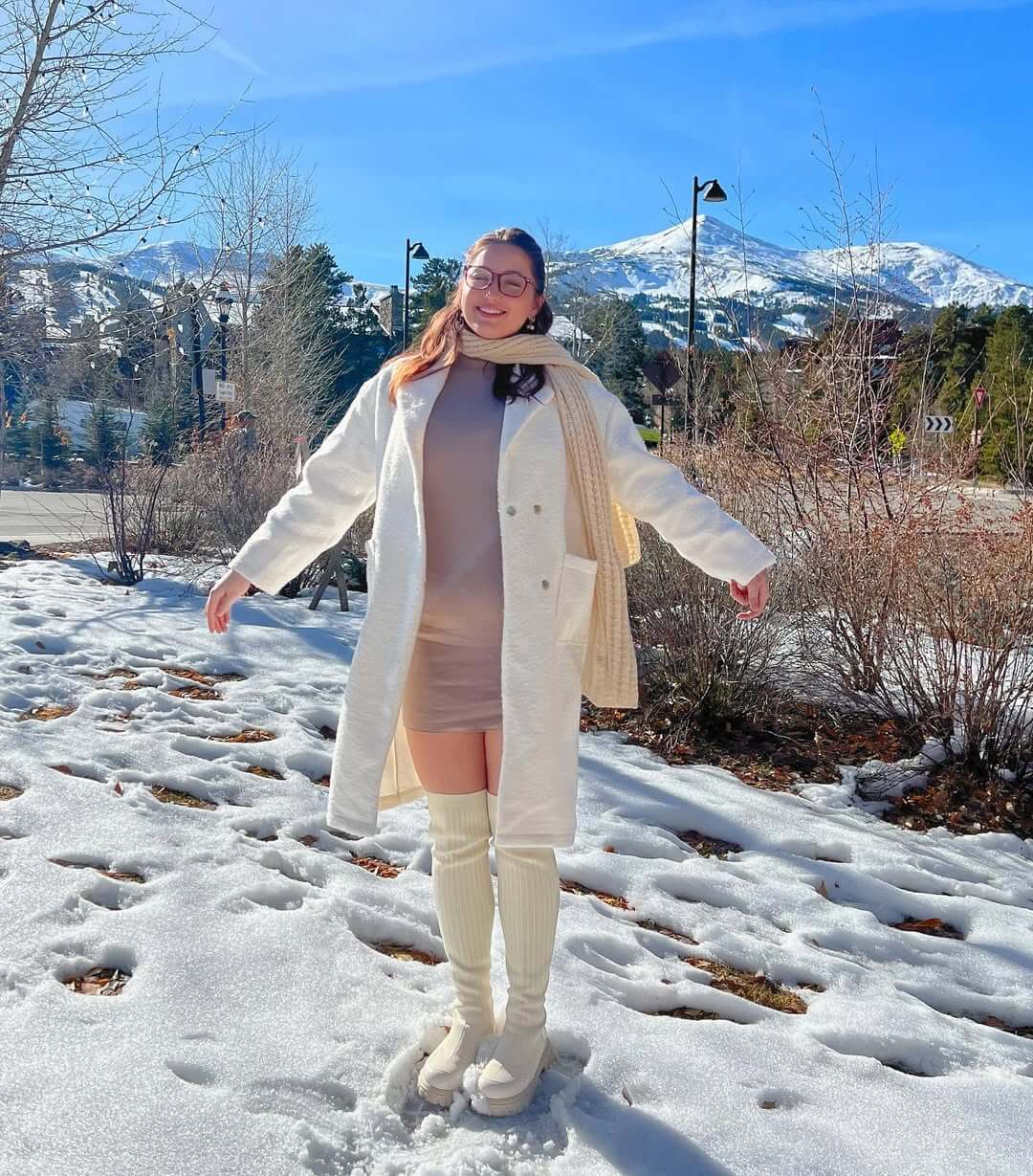
Packing for snow feels like a puzzle. I use compression cubes to shrink bulk and roll puffers instead of folding them — it saves space and keeps shape.
Shoes go heel-to-toe inside waterproof bags, with socks stuffed in for padding.
Build a mini “comfort kit” with glove liners, moisturizer, and thermal socks. Forget one, and you’ll remember it the second you step outside in 10-degree air.
The best part? Once you pack right once, you’ll reuse that setup every winter trip.
Next, let’s keep that investment lasting beyond the season. Because good winter gear isn’t cheap — and with the right care, you won’t need to replace it every year.
Caring for Winter Gear
When you get home, spread everything out and let it breathe. Wash wool and synthetics in cold water, air-dry, then toss two tennis balls in the dryer with puffers to restore their fluff. It actually works.
Before you stash your jacket away, reapply a waterproofing spray — it revives the outer layer so you’re ready for next season. Small habits like this keep gear alive for years instead of one winter.
Once your kit’s clean and packed, you’ll be ready to greet Breckenridge’s next storm instead of dreading it.
When the Cold Starts to Feel Like Home
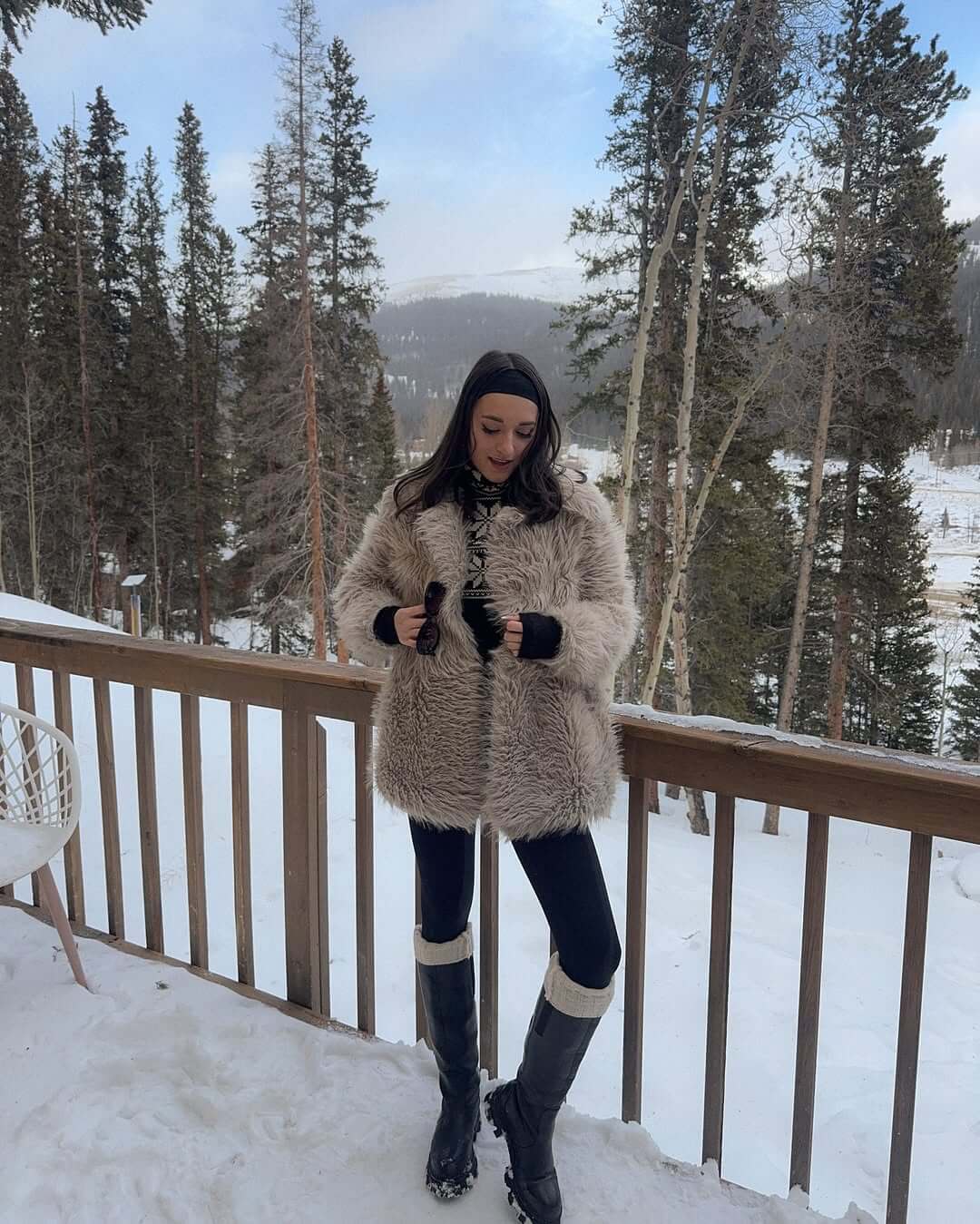
There’s a peace that comes when you stop fighting the cold and start dressing for it. I used to dread snow days; now they feel like reset days.
Up here, warmth isn’t just about temperature — it’s the calm that comes from knowing you’re prepared. The streets glow, boots crunch, and every breath feels earned.
So pull on your layers, zip your parka, and step outside. The mountain’s waiting — and this time, you’re ready for it.
Before you zip up for your trip, let’s tackle a few quick questions I always get about dressing for Breckenridge winters. These might save you a few shivers once you’re there.
FAQs About Breckenridge, Colorado Outfits
Q1. What kind of jacket actually works in Breckenridge?
Go for a waterproof parka that can handle steady snow, not just drizzles. A good one keeps wind off your neck, fits snug around the wrists, and has a hood that stays put in gusts. The small details matter more than the logo on the sleeve.
Q2. How should I layer for those freezing mornings?
Stick with three layers: a breathable base, a cozy middle layer like fleece or wool, and a weatherproof shell on top. That combo traps heat without turning you sweaty when you’re walking uphill or ducking into a café.
Q3. Do I really need snow boots if I’m not skiing?
Yes — the sidewalks stay slick long after they’re plowed. Look for boots with solid traction, insulation, and waterproof lining. They’ll keep your toes warm while everyone else is stomping for warmth in soaked sneakers.
Q4. What should I wear when the sun’s out but it’s still freezing?
Breckenridge sun can be strong even in midwinter, so balance warmth with protection. Light gloves, sunglasses, and a thin layer of SPF go a long way. The glare off the snow can feel like a second sun hitting your face.
Q5. How can I pack all that winter gear without overstuffing my bag?
Roll your puffers instead of folding them, tuck socks inside your shoes, and use compression cubes to shrink bulky sweaters. I keep a “grab pouch” with lip balm, lotion, and glove liners so I don’t dig through layers when the temperature drops.
What’s your go-to outfit for a snow day?
Share it in the comments — I’m always looking for new ideas before my next trip back to Breck.
Thanks for reading — if you found this guide helpful, save it on Pinterest or share it with a friend planning their first Breck trip.
RELATED:

